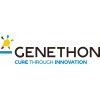3区 · 医学
Article
作者: Müller-Kuller, Uta ; Brendel, Christian ; Schambach, Axel ; Thrasher, Adrian J. ; Modlich, Ute ; Stein, Stefan ; Grez, Manuel ; Santilli, Giorgia ; Kunkel, Hana ; Rothe, Michael ; Charrier, Sabine ; Galy, Anne ; Abriss, Daniela ; Gaspar, Bobby
Chronic granulomatous disease (CGD) is a debilitating primary immunodeficiency affecting phagocyte function due to the absence of nicotinamide dinucleotide phosphate (NADPH) oxidase activity. The vast majority of CGD patients in the Western world have mutations within the X-linked CYBB gene encoding for gp91phox (NOX2), the redox center of the NADPH oxidase complex (XCGD). Current treatments of XCGD are not entirely satisfactory, and prior attempts at autologous gene therapy using gammaretrovirus vectors did not provide long-term curative effects. A new strategy was developed based on the use of the lentiviral vector G1XCGD expressing high levels of the gp91phox transgene in myeloid cells. As a requisite for a clinical trial approval, standardized non-clinical studies were conducted in vitro and in mice in order to evaluate the pharmacodynamics and biosafety of the vector and the biodistribution of G1XCGD-transduced cells. Transduced CD34+ cells derived from XCGD patients engrafted and differentiated similarly to their non-transduced counterparts in xenograft mouse models and generated therapeutically relevant levels of NADPH activity in myeloid cells expressing gp91phox. Expression of functional gp91phox in hematopoietic cells did not affect their homing properties, which engrafted at high levels in mice. Extensive in vitro and in vivo genotoxicity studies found no evidence for adverse mutagenesis related to vector treatment. These studies paved the way for the approval of clinical trials in Europe and in the United States for the treatment of XCGD patients with G1XCGD gene-modified autologous hematopoietic cells.







